MARIANI’S
December
18, 2005
NEWSLETTER
Christmastime at New York's `21' Club
UPDATE:
To
go to my web site, in which I will update food
&
travel information and help link readers to other first-rate travel
& food sites, click on: home page
ACCESS TO
ARCHIVE: Readers may now access
an
Archive of all past newsletters--each annotated--dating back to July,
2003, by simply clicking on www.johnmariani.com/archive
.
NEW
FEATURE! You may now subscribe anyone you wish
to this newsletter by
clicking here.
In This Issue
CAPPADOCIA by John MarianiNotes from the Wine Cellar: The New Wines of Turkey by John Mariani
NEW YORK CORNER: `21' CLUB by John Mariani
QUICK BYTES
Cappadocia
by John Mariani
Photo: G.Stepanoff-Dargery
The low lighting of the beautiful caravansary--one of hundreds of ornate rest stops built every 25 miles along the ancient trade route--cast a flickering and shadowy mystique over the arched hall, and the music had its own archetypal, if droning, appeal. The musicians, playing drums, a lute-like instrument and a reed flute, sat down first and played in near darkness, a eulogy to The Prophet called "Nat-i-Şerif." The dervishes (or Semâzans) appeared, the lights brightened a little, the men greeted each other, and then slowly began whirling in place, their white skirts flaring in the muted light like huge blossoming flower petals or the wings of manta rays. They closed their eyes as they whirled round and round, their arms outstretched, in imitation of the spinning of the universe itself. Then the Dervishes began moving in a circle, in four symbolic salutes, never ceasing to whirl, in order to reach a state of religious fervor, and ending with a reading of the Quran, after which the dervishes return to their monastic cells for meditation called tefekkür.
One has to remind oneself that this is purely a religious ceremony, not entertainment, so there was little in the way of momentum or change, as one would have in a dance recital, and the evening did not lend itself to thunderous applause.
If the mountains of Pakistan and Afghanistan are anything like Cappadocia's, with so many places to hide and people to hide him, Bin Laden should be safe from discovery for years to come.
It is certainly unlike any place I have ever stayed before, and its remove from everything around it (none of the cities are very large) gives guests a feeling of being very far away in a truly exotic place. I felt I was in the middle of the world, not the center, but the middle, as if everything else might have evolved from here.
Cappadocia was once the center of the Hittite empire, only conquered by Alexander the Great in the 3rd Century B.C., later an ally then a colony of Rome. That its people were experts at hiding from various invaders over the millennia is manifest in the cave dwellings that speckle the landscape.
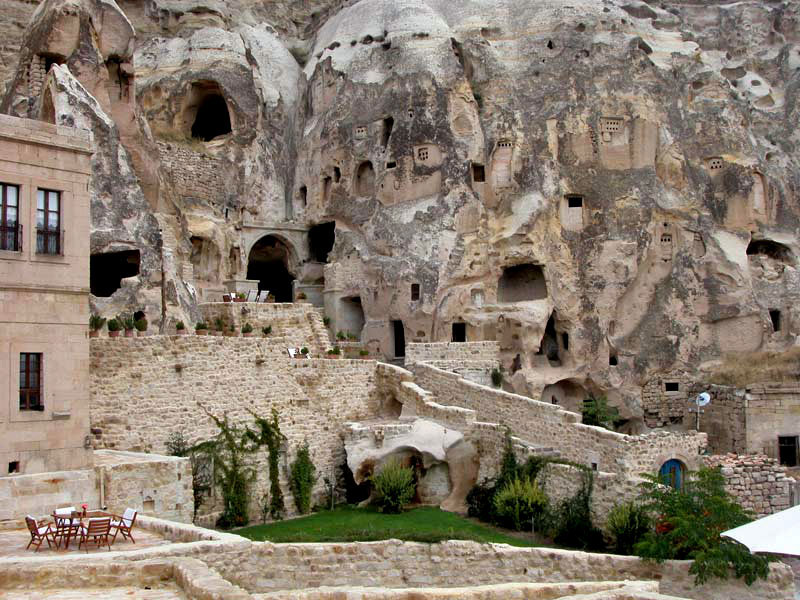
A semblance of what it is like to live in such a community is to be found at an astounding hotel carved out of 5th and 6th century caves and a 19th century Greek mansion. Yunak Evleri (right; 90-384-341-6920; www.yunak.com; ) near the town of Ürgüp has a primordial beauty whose starkness and apparent primitivism vie with modernity within the transformed holes-in-the-walls. The hotel (curious word for this assemblage) has 29 cave rooms (below), their arched ceilings preserved and restored impeccably, now outfitted with all amenities, from comfortable queen-sized beds to commodious marble baths, from beautiful Kilim carpets and lace curtains to antique trunks and Ottoman period bedsteads. There is even a honeymoon suite with a Jacuzzi and another suite with a steambath.
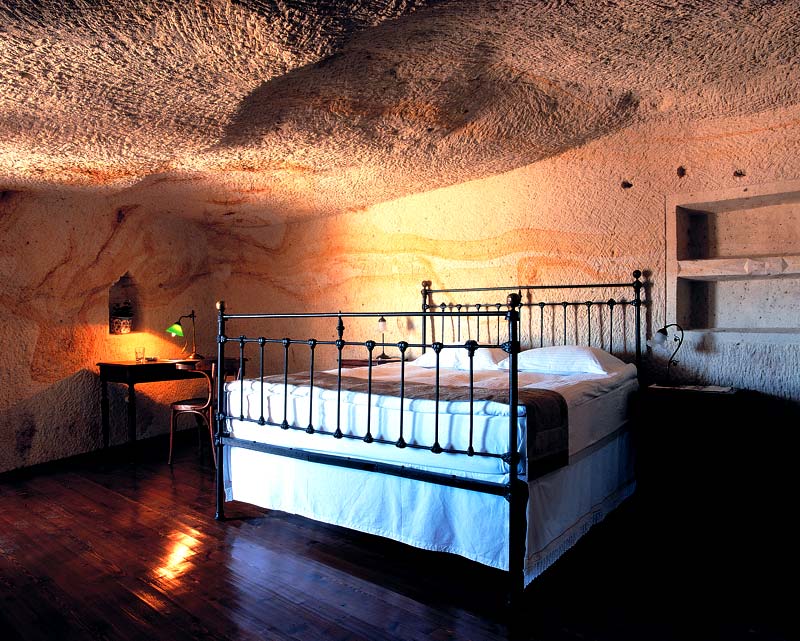 The welcome at Yunal Evleri is
warm and inviting
and dispels all thought of having to rough it out in these caves.
The welcome at Yunal Evleri is
warm and inviting
and dispels all thought of having to rough it out in these caves.
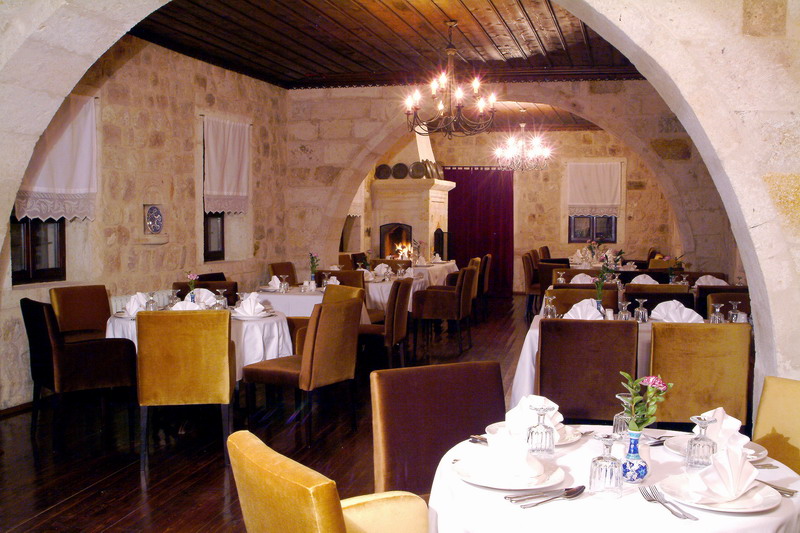 There are porches and umbrellas, alfresco
sofas in good weather, outdoor fireplaces for the cool nights, and a
main building where, if the gods are willing and the stars
aligned, you can even connect to the Internet. And it is all so very,
very quiet as you lie in your bed beneath a canopy of carved rock, with
nothing but the sound of the whirring wind outside.
There are porches and umbrellas, alfresco
sofas in good weather, outdoor fireplaces for the cool nights, and a
main building where, if the gods are willing and the stars
aligned, you can even connect to the Internet. And it is all so very,
very quiet as you lie in your bed beneath a canopy of carved rock, with
nothing but the sound of the whirring wind outside.There is also a delightful, rustic restaurant (right) on the premises where guests dine on both Turkish food and standard meats and seafood, with a selection of Turkish wines I found remarkably tasty. (See below for more on the burgeoning Turkish wine industry.) The restaurant serves a lavish buffet breakfast, and in the evenings you can dine well on Turkish ravioli called manti, very good lamb dishes, and local vegetables, all served by a charmingly amiable staff. There are few tables and you'll probably meet travelers from around the world and perhaps make transient friends from Britain, Germany, Russia, and Japan. In the background they play Dizzy Gillespie and John Coltrane.
Photo: G. Stepanoff-Dargery
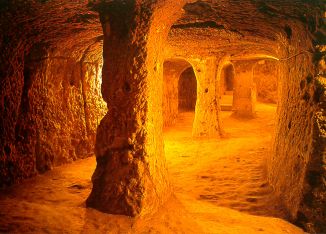 wineries, and study rooms.
People
might live here for the entire year, hidden from their
enemies,receiving air from a 55-meter
ventilation shaft that also acted as a well. Opened in 1965, 90
percent of the city is still unvisitable. With slight apprehension, I
descended three floors below the surface, down steep steps and through dank,
backbending, fortunately well lighted, tunnels, before a feeling of
claustrophobia kicked
in. My guide led me back to the open air, where my wife was
waiting, and I was never so happy to see blue sky and sun.
wineries, and study rooms.
People
might live here for the entire year, hidden from their
enemies,receiving air from a 55-meter
ventilation shaft that also acted as a well. Opened in 1965, 90
percent of the city is still unvisitable. With slight apprehension, I
descended three floors below the surface, down steep steps and through dank,
backbending, fortunately well lighted, tunnels, before a feeling of
claustrophobia kicked
in. My guide led me back to the open air, where my wife was
waiting, and I was never so happy to see blue sky and sun.We were then brought to the store, opened in 1960, and, with no small degree of enthusiasm, watched the manager and his staff unroll carpet after carpet after carpet in a large room, until they overlapped each other, some long kilims, others broad, some in silk, some made with goat's hair and cotton. The display was like a candy shop's, tantalizing, maddening in its temptations, beautiful beyond imagining. My wife and I bought two carpets, which were wrapped for us to take home; otherwise the Gallery ships worldwide. Photo: G. Stepanoff-Dargery
Gastronomically Cappadocia shares the same tastes as most of the rest of Turkey, from the addictive little meat or cheese-filled ravioli called manti, graced with yogurt and perhaps a
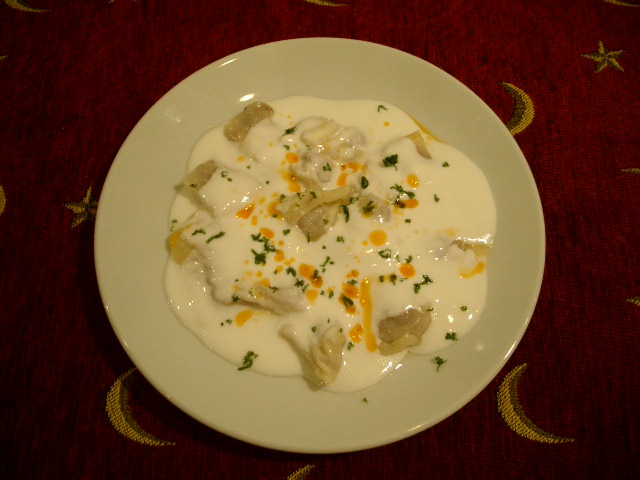 touch of
paprika (left), to the baklava
desserts—thin sheets of baked, buttered pastry crammed with pistachios
or
walnuts and suffused with intense sugar syrup. And of course, there are
the dozens of mezes to choose
from,
touch of
paprika (left), to the baklava
desserts—thin sheets of baked, buttered pastry crammed with pistachios
or
walnuts and suffused with intense sugar syrup. And of course, there are
the dozens of mezes to choose
from, The restaurants are either very basic or designed, like caravansaries, to appeal to travelers, usually with fine decor, large communal tables, and music. TaşHan (Güvercinlik Vadisi; 0384-219-2958) in Uçhisar is typical--large, very convivial, with a parking lot full of tour buses. The food is served buffet style, and won't cost very much, and they sell several Turkish wines on premises.
It would be easy to say that Cappadocia is still in a state of suspension, and I wish that were true. Tiny windswept towns are in abundance and old men sit in the afternoon sun and drink tea and eat sweetmeats in the square. Women still weave carpets and the religiosity of the region is still palpable, both in the Christian shrines and in the Islamic mosques. Some people still live in the mountain caves. But Cappadocia has edged into the 21st century, while maintaining its old character. It is the land itself that has helped preserve the region and its people from headlong urbanization, but it's coming. Fortunately, I think, it will be a long long time before Cappadocia loses anything of its soul to tourism, but going now is better than going later.
NOTES FROM THE WINE CELLAR by John Mariani
Turkish Winemakers Achieve Quality under Tough Conditions
Wine was being made in
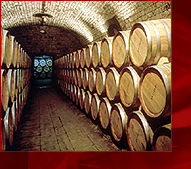 After
Mustafa Kemal Ataturk dissolved the
Ottoman sultanate in 1922, he encouraged wine production, though
largely under
strict government control that directed which local grape varieties
would be
planted and how the wines would be made. The results were largely
poor,
often oxidized wine intended either for export as cheap wines to
After
Mustafa Kemal Ataturk dissolved the
Ottoman sultanate in 1922, he encouraged wine production, though
largely under
strict government control that directed which local grape varieties
would be
planted and how the wines would be made. The results were largely
poor,
often oxidized wine intended either for export as cheap wines to Even five years ago there would have been little to report on the Turkish wine industry. Only in the last decade have independent wineries, led by Kavaklidere (founded in
“Monopole only made wines from local grapes,” says Estat Ayhan, owner of
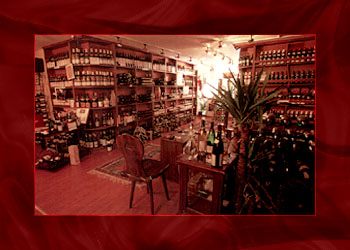 which
carries more than 400 Turkish wines from 45 wineries.
“Monopole always had a constant
supply of their wines in the stores, but fewer people drank them
because they
weren’t very good. A lot of it was shipped to
which
carries more than 400 Turkish wines from 45 wineries.
“Monopole always had a constant
supply of their wines in the stores, but fewer people drank them
because they
weren’t very good. A lot of it was shipped to According to Ayhan and interviews at wineries and
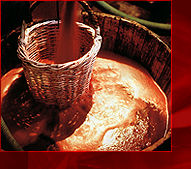 Yet just as
Yet just as Nevertheless, of several dozen Turkish wines I tasted over a week visiting
One winery, Cappadocian wine company, Turasan (www.turasan.com.tr), in business since 1943, became famous overnight when a TV soap opera regularly featured it as a place young Turks would go to sample wine in a tasting room that looks pretty close to those at the
Independent Turkish wineries have now proven they can make wines at the same quality level as those from neighboring eastern European countries—the
by John Mariani
`21' Club
21 West 52nd Street
212-582-7200
www.21club.com
The Bar Room at `21'
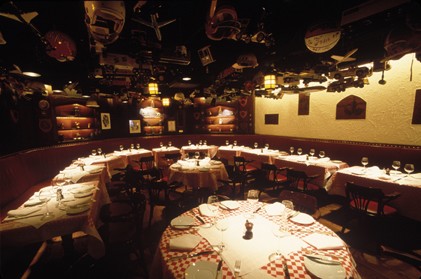
Its raffish history is part of the lore of New York City, during the days when Mayor Jimmy Walker would have soirées with showgirls in the wine cellar to the times when everyone from Richard Nixon to Elizabeth Taylor stored their own wines here. The restaurant has been the scene of two important movies--"The Sweet Smell of Success" and "Wall Street" (a new Spike Lee movie is about to shoot here, too)--whose directors needed an iconic image of a restaurant packed with power tables.
The façade (shown at the head of this newsletter) is as famous as those of Tiffany's, the Chrysler Building, or the Metropolitan Museum of Art. The tables in the bar room (above) have brass nameplates of celebrities who dined here, from Humphrey Bogart to Orson Welles, and the ceiling is festooned with the toys of major corporations for whom such a display is to a notable rite of passage. The upstairs party rooms are museums of fine artwork, both graphic and sculpture, and the wine cellar itself, hidden from view by a six-ton cement wall still opens at the click of a lock jiggled with a long wire (right), now to reveal one of the most beautiful rooms in any American restaurant (below).

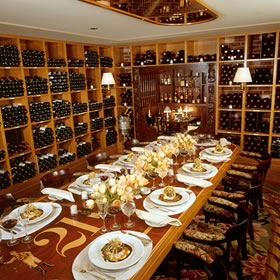 Seven decades in business has given `21' institutional
status, and
that, for a while there, was part of a problem neglected back in the
1970s and '80s when its faithful clientele started to die off and both
the interiors and the kitchen were in sore need of revamping. No
one knew the chef's name and no one cared. The menu never changed
and the food always tasted the same, which was thoroughly dull.
The old guard, who had run the place since its inception, seemed not to
notice, until carpet magnate Marshall S. Cogan bought the place in 1987
and poured millions into rehab without destroying the look and spirit
of the place. He also brought in fine, fresh talent to the
kitchen, and the food improved rapidly while maintaining the sacrosanct
menu here.
Seven decades in business has given `21' institutional
status, and
that, for a while there, was part of a problem neglected back in the
1970s and '80s when its faithful clientele started to die off and both
the interiors and the kitchen were in sore need of revamping. No
one knew the chef's name and no one cared. The menu never changed
and the food always tasted the same, which was thoroughly dull.
The old guard, who had run the place since its inception, seemed not to
notice, until carpet magnate Marshall S. Cogan bought the place in 1987
and poured millions into rehab without destroying the look and spirit
of the place. He also brought in fine, fresh talent to the
kitchen, and the food improved rapidly while maintaining the sacrosanct
menu here.Cogan's tenure ended when the Orient-Express Company bought `21' in the 1990s and poured still more money into brightening everything, persuading the oldtimers--both staff and clientele--that change was not just a good thing but requisite to bringing in newcomers who might well have thought of the restaurant as dated. It was during this time that the wine cellar, once a warren of shelves and crates, was made over into the stunning private room it now is. An upstairs room was given evocative New York murals, and a series of chefs won over the gourmet crowd, while tweaking the beloved classic dishes here like the `21' Burger and the chicken hash (which at least one customer eats here at least once a day). They even hired away master maître d' Oreste Carnevale from a formidable competitor, The Four Seasons.
The chefs who have come and gone, including Alain Sailhac, Anne Rosenzweig, Daniel Bruce, Michael Lomonaco, and Erik Blauberg--all helping to re-position `21,' as is the current chef in charge, a young man named Stephen Trojahn (right), who comes from the Ritz-Carlton in Beaver Creek, Colorado. On the basis of one extensive dinner at which my guests and I sampled both the classic and new sections of the menu, I can happily report that Trojahn shows real promise in being able to satisfy the oldtimers who still want their steak tartare and Heineken, those who love nothing better than Dover sole with a bottle of great Meursault from one of New York's best cellars, and those who want to see what this new, young chef can accomplish with seasonal ingredients.
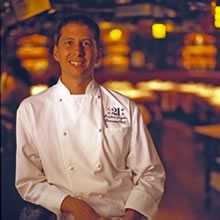
After a round of well-made daiquiris, with an amuse of cured venison with baby arugula, our table ordered some old and some new dishes. Of the former, the crabcake was fabulous--about the size of a softball and full of little but fresh lump crabmeat. Excellent seared foie gras came with pickled Asian pears, and bay scallops were lightly napped with lemon butter to preserve their sweetness. We were about equally divided in our opinion of roasted garlic coup with melted Brie cheese. I thought it was a wonderful, if very rich, dish for winter; others thought the ingredients didn't jibe. We all agreed, however, that a very strange winter squash risotto with spiced pumpkin seeds took on the distasteful flavor of burnt rubber, possibly from the addition of a nutmeg-pumpkin oil.
The first wine of the evening chosen by sommelier Philip W. Pratt was an odd choice--a 1987 Lopez de Heredia Viña Tondoñia Blanco, which I thought would have been slightly oxidized at that age and it was, making it taste like inferior sherry. His other choices, ranging from a delicious Ladoucette Baron d'L 2000 and luscious J.M. Pillot Chassagne "Morgeot" 2002 to a Mitolo "G.A.M." McLaren Vale Shiraz 2003 and a glass of 15-year-old Cosset-Gordon Bual were thrilling.
The Remington Room
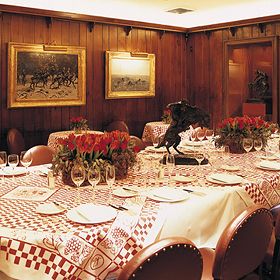 Two
of the entrees were outright winners: Pomegranate-scented halibut with
baby eggplant and mashed potatoes, and a lusty loin and a smoky chop wrapped
in double bacon of venison (which
should have been American, not from New Zealand!) in a rich
reduction of red wine. The usual,
complex flavors of a generous osso
buco were delectable, but for some reason Trojahn takes
the
meat from the bone, which detracts from one of the principal
pleasures of the dish--digging out the marrow. And while Dover
sole was of fine quality
and impeccably cooked à la
meuniére, it could have used some sizzling browned butter
spooned onto it at the last moment, preferably tableside. For a
textbook lesson in making pommes
soufflés, ask how they do the
perfect little golden pillows at `21.'
Two
of the entrees were outright winners: Pomegranate-scented halibut with
baby eggplant and mashed potatoes, and a lusty loin and a smoky chop wrapped
in double bacon of venison (which
should have been American, not from New Zealand!) in a rich
reduction of red wine. The usual,
complex flavors of a generous osso
buco were delectable, but for some reason Trojahn takes
the
meat from the bone, which detracts from one of the principal
pleasures of the dish--digging out the marrow. And while Dover
sole was of fine quality
and impeccably cooked à la
meuniére, it could have used some sizzling browned butter
spooned onto it at the last moment, preferably tableside. For a
textbook lesson in making pommes
soufflés, ask how they do the
perfect little golden pillows at `21.'For dessert there were poached pears in port wine with a touch of anise, bay leaf, and cinnamon, and a soufflé that needed the gilding of a creme anglaise stirred into it.
If you've never been to `21,' you owe it to yourself both for the fine food and for the experience, and if you haven't been in a while, I think you'll find it particularly evocative, especially during the holidays this year when we could all use a bit of decadence mixed in with fine cuisine and a great bottle of wine.
At dinner, à la carte appetizers run $12-$28, main courses $$30-$41, but there are several fixed priced options. In the Bar Room a 3-course lunch is $33, with a new menu each week; Pre-theater dinner is $38; A tasting menu of 7 courses is $120; Upstairs at `21' three courses are $65.
HOW TO HAVE A VERY MERRY CHRISTMAS
by Anonymous
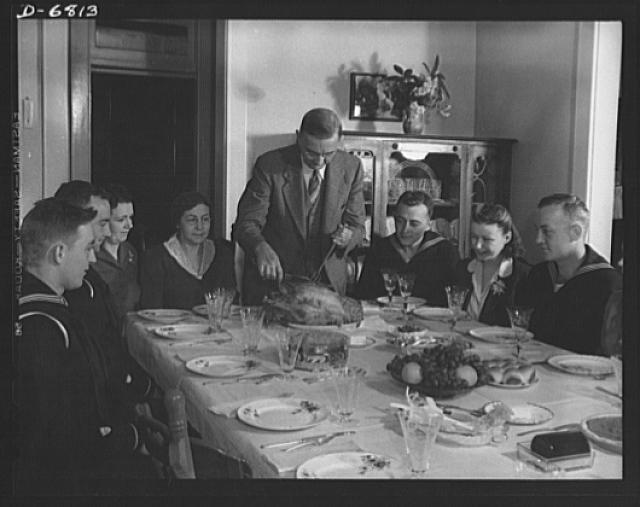
1. Avoid carrot sticks. Anyone who puts carrots on a holiday buffet table knows nothing of the Christmas spirit. In fact, if you see carrots, leave immediately. Go next door, where they're serving rum balls.
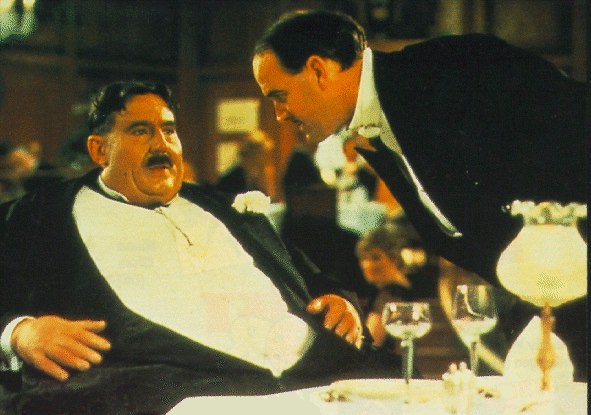
2. Drink as much eggnog as you can. And quickly. Like fine single-malt scotch, it's rare. In fact, it's even rarer than single-malt scotch. You can't find it any other time of year but now. So drink up! Who cares that it has 10,000 calories in every sip? It's not as if you're going to turn into an eggnog-aholic or something. It's a treat. Enjoy it. Have one for me. Have two. It's later than you think. It's Christmas!
3. If something comes with gravy, use it. That's the whole point of gravy. Gravy does not stand alone. Pour it on. Make a volcano out of your mashed potatoes. Fill it with gravy. Eat the volcano. Repeat.
4. As for mashed potatoes, always ask if they're made with skim milk or whole milk. If it's skim, pass. Why bother? It's like buying a sports car with an automatic transmission.
5. Do not have a snack before going to a party in an effort to control your eating. The whole point of going to a Christmas party is to eat other people's food for free. Lots of it.
6. Under no circumstances should you exercise between now and New Year's. You can do that in January when you have nothing else to do. This is the time for long naps, which you'll need after circling the buffet table while carrying a 10-pound plate of food and that vat of eggnog.
7. If you come across something really good at a buffet table, like frosted Christmas cookies in the shape and size of Santa, position yourself near them and don't budge. Have as many as you can before becoming the center of attention. They're like a beautiful pair of shoes. If you leave them behind, you're never going to see them again.
8. Same for pies. Apple. Pumpkin. Mincemeat. Have a slice of each. Or, if you don't like mincemeat, have two apples and one pumpkin. Always have three. When else do you get to have more than one dessert?
9. Did someone mention fruitcake? Granted, it's loaded with the mandatory celebratory calories, but avoid it at all cost. I mean, have some standards.
Remember this motto to live by:
Life should NOT be a journey to the grave with the intention of arriving safely in an attractive and well preserved body, but rather to skid in sideways, chocolate in one hand, martini in the other, body thoroughly used up, totally worn out and screaming WOO HOO what a ride!
DEPT. OF AMPLIFICATION
In last week's newsletter in the article on Valbella, NYC, I neglected to say that David Ghatanfard is the owner of the restaurant.
BOTH THE BEST AND STUPIDEST INVENTION EVER TO COME OUT OF GERMANY
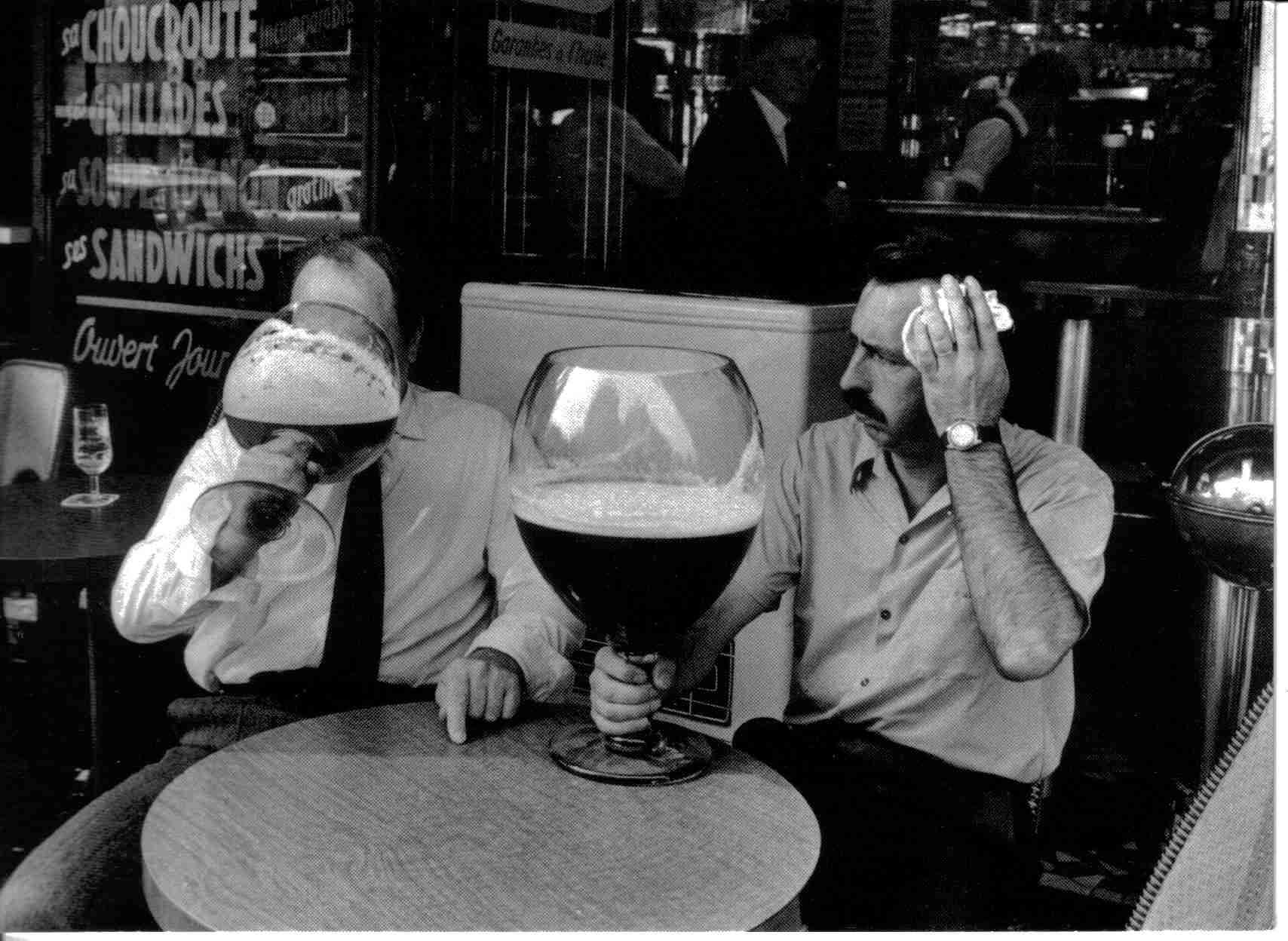

BLOCK THAT METAPHOR!

QUICK BYTES
* On Jan. 25 The Manor in NJ’s Chef Michael Weisshaupt has invited Chef Luigi Baretto of Ram’s Head Inn, to present an all-Italian evening of fine dining and music. The highlight of the dinner will be a performance by the singer Julius La Rosa. The 5-course dinner with show is $79 pp. Call 973-731-2360.
~~~~~~~~~~~~~~~~~~~~~~~~~~~~~~~~~~~~~~~~~~~~~~~~~~~~~~~~~~~~~~~~~~~~~~~~~
MARIANI'S VIRTUAL GOURMET NEWSLETTER is published weekly. Editor/Publisher:
John Mariani. Contributing Writers: Robert Mariani, Naomi
Kooker, Kirsten Skogerson, Edward Brivio, Mort
Hochstein, Lucy Gordan, Suzanne Wright. Contributing
Photographers: Galina Stepanoff-Dargery, Bobby Pirillo. Technical
Advisor: Gerry McLoughlin.
Any of John Mariani's books below
may be ordered from amazon.com by clicking on the cover image.
 |
 |
 |
 |
 |
 |
copyright John Mariani 2005